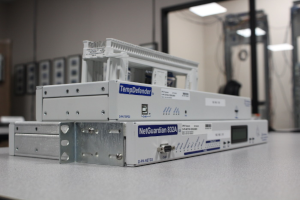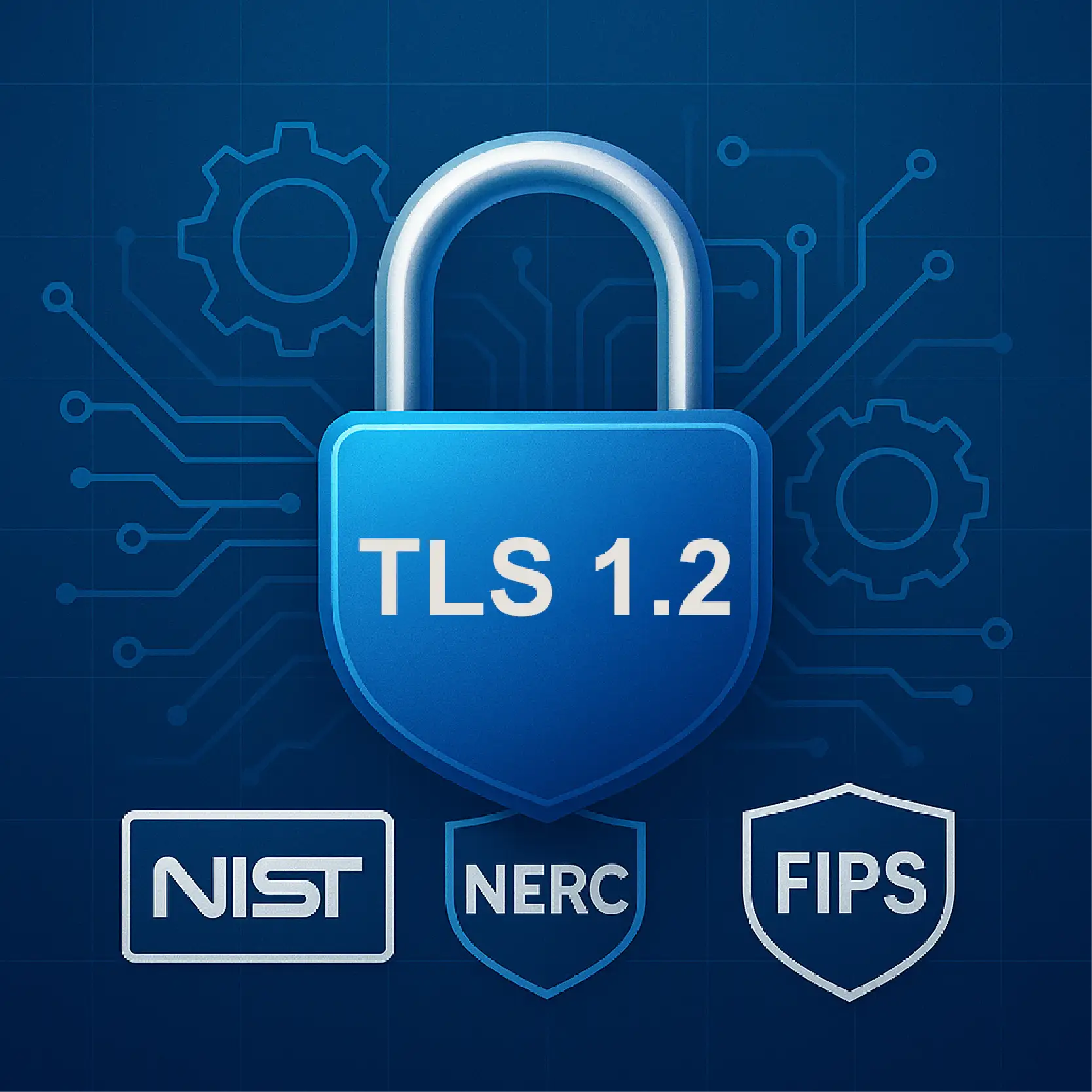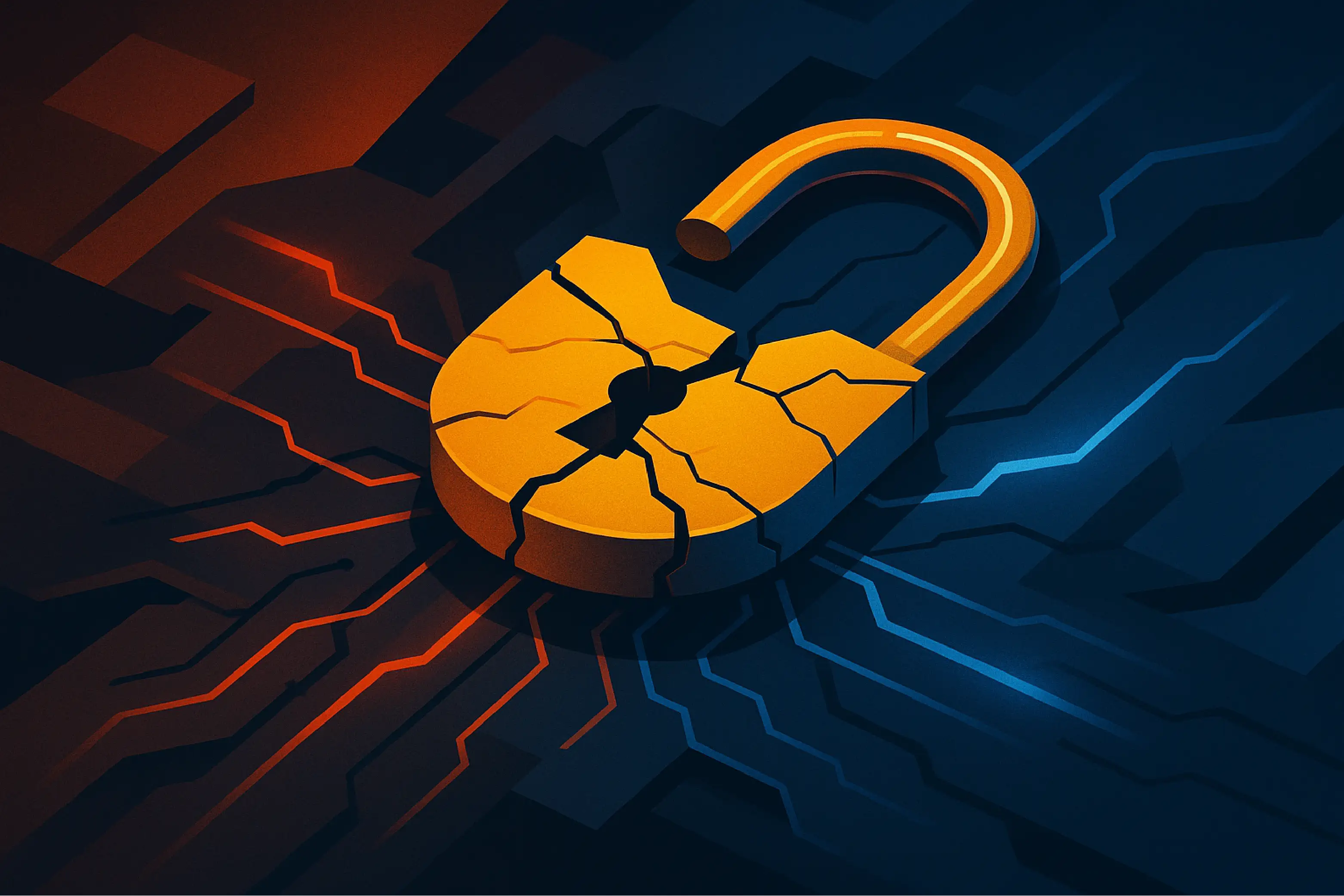Check out our White Paper Series!
A complete library of helpful advice and survival guides for every aspect of system monitoring and control.
1-800-693-0351
Have a specific question? Ask our team of expert engineers and get a specific answer!
Sign up for the next DPS Factory Training!

Whether you're new to our equipment or you've used it for years, DPS factory training is the best way to get more from your monitoring.
Reserve Your Seat TodayWhether you work for a federal agency, a power utility, or a private company operating in a regulated sector, you're no stranger to compliance requirements from various sources. The many regulatory acronyms - NIST, NERC, FIPS - are in place to secure critical infrastructure and sensitive data.
Failing to comply could mean lost contracts or even million-dollar fines.
Central to preventing these shortcomings is TLS 1.2.
This protocol may not sound exciting (which is probably true!), but it sits at the heart of every secure system - and the rules around it are tightening. If you're not ready, your hardware might already be obsolete.
Let's walk through exactly why TLS 1.2 is a critical part of your compliance strategy - and what you can do to make sure your older equipment doesn't hold you back.
After all, security isn't just good practice anymore - it's mandatory.

TLS (Transport Layer Security) is a protocol that encrypts data as it travels over a network. That includes data between web browsers and servers, between two machines over the internet or between devices on a local network.
TLS is the more-secure successor to SSL (Secure Sockets Layer). You've probably heard of it - even if you didn't realize it was deprecated over a decade ago.
TLS 1.2, specifically, is the minimum acceptable version of TLS today in regulated environments. While TLS 1.3 exists and is gaining traction, TLS 1.2 remains the baseline requirement in nearly all current compliance frameworks.
TLS 1.2 is important for monitoring systems as it provides:
With these advantages, TLS 1.2 is a big asset - and it's explicitly required by multiple compliance frameworks.
There's no longer any gray area about older TLS versions. TLS 1.0 and 1.1, as well as SSL 2.0 and 3.0, are officially deprecated. Most modern operating systems and browsers will no longer support them at all.
Microsoft, Google, Apple, and Mozilla all removed support for TLS 1.0 and 1.1 from their browsers years ago. If you're still running network equipment that only supports those versions, that equipment may also be completely inaccessible to users trying to connect.
In regulated environments, that's a problem that extends beyond usability. It's a compliance failure.
TLS 1.2 shows up in the standards that matter most to regulated industries.
The National Institute of Standards and Technology (NIST) is the guiding force behind cybersecurity for U.S. government agencies - and, increasingly, for private-sector partners as well.
According to NIST Special Publication 800-52 Revision 2, federal systems must support TLS 1.2 or higher. The document posits:
"All government TLS servers and clients shall be configured to support TLS 1.2... configured with FIPS-based cipher suites."
This means if your equipment connects to or communicates with any government IT system, TLS 1.2 is mandated.
Even systems that don't directly interact with federal data may still fall under these guidelines if they're in a shared environment, subcontracted role, or receive federal funding.
This has major implications for hardware manufacturers, software developers, and system integrators. If your product doesn't support TLS 1.2, your federal opportunities may vanish overnight.
Electric utilities follow a different set of rules. The North American Electric Reliability Corporation (NERC) enforces Critical Infrastructure Protection (CIP) standards that apply to organizations responsible for the Bulk Electric System (BES).
Two key standards are relevant here:
In both cases, using secure communication protocols - such as TLS 1.2 - is mandatory. Any access path that is not encrypted or is encrypted using outdated standards could lead to non-compliance fines. Unfortunately, these fines can reach into the millions of dollars per incident.
For example, even a browser-based interface for device management must use secure, modern encryption. If a field tech logs into an RTU or controller through an unencrypted or weakly encrypted page, your utility could be in violation.
FIPS (Federal Information Processing Standards) defines how cryptographic systems must operate in federal environments.
The most relevant to TLS is FIPS 140-2, which outlines the requirements for cryptographic modules. If your device uses TLS to encrypt data, it must:
Even if your equipment uses TLS 1.2, it won't be compliant unless the underlying cryptographic engine is FIPS-certified.
That's why it's not enough to only say "we use TLS 1.2." You also need to make sure that:
As a real-world example, some of our clients have asked us to confirm that our RTUs use a FIPS-compliant encryption library during pre-purchase research.

So, what happens if you don't meet these standards?
Here's what you might see as a result:
Regulators from NERC, federal auditors, or internal security teams may flag your system as non-compliant. That alone can trigger remediation orders, system replacements, or mandatory oversight.
Many federal and utility contracts include clauses that require strict compliance with security protocols. Non-compliance gives the client the legal right to terminate your contract immediately.
NERC CIP fines can exceed $1 million per day, per violation.
Security incidents are increasingly made public. If a breach or audit failure is traced back to non-compliant encryption, your organization could suffer serious reputational damage.
Compliance is a business-critical function.
The ideal scenario is one where compliance is built in from the start. When you deploy new equipment, you shouldn't have to worry about whether it meets encryption standards. It just does.
This way, your systems pass audits without issue - with no flags or follow-up corrections required. You can also pursue federal and utility contracts with confidence, knowing your gear is already approved for use in those environments.
Meanwhile, your IT team can shift focus from patching non-compliant devices to improving your infrastructure. All of this becomes possible when your equipment is designed from the ground up with security and compliance as core features.
If you're in the market for RTUs, remote monitoring systems, or site controllers, there's good news. The DPS Telecom G6 RTU platform is ready for deployment in most environments that require NIST, NERC, and/or FIPS compliance.
With the G6 platform, you get:
The G6 platform uses strong encryption algorithms that meet FIPS 140-2 requirements and are explicitly recommended by NIST.
Whether you're managing your devices through SNMP or a browser, you'll be protected by modern encryption protocols.
Field-upgradeable firmware lets you keep pace with evolving standards. If TLS 1.3 becomes the next requirement (for example), you'll generally be able to update firmware instead of replacing hardware (as long as the hardware has sufficient speed to handle a newer standard).
In addition to secure TLS support, G6 devices also support MODBUS, DNP3, and other protocols. These are commonly used in utility and industrial networks.
G6 RTUs are rugged, battle-tested, and designed to work in demanding environments where downtime is not an option.
You don't need to struggle with bolt-on modules or last-minute compliance fixes. With DPS, it's all built in.
If you're using older equipment that doesn't support TLS 1.2, you may already be out of step with federal or utility regulations. Even worse, you could be exposed to active cybersecurity threats that exploit outdated encryption.
That's not a risk worth taking.
Secure, compliant, and future-ready monitoring systems are available now - and we're here to help you deploy them with confidence.
If you're ready to bring your infrastructure up to compliance, we're ready to help.
Give us a call at 559-454-1600 or send an email to sales@dpstele.com.
We'll answer your questions, walk you through your compliance requirements, and help you choose the right equipment for your site.

Andrew Erickson
Andrew Erickson is an Application Engineer at DPS Telecom, a manufacturer of semi-custom remote alarm monitoring systems based in Fresno, California. Andrew brings more than 18 years of experience building site monitoring solutions, developing intuitive user interfaces and documentation, and opt...